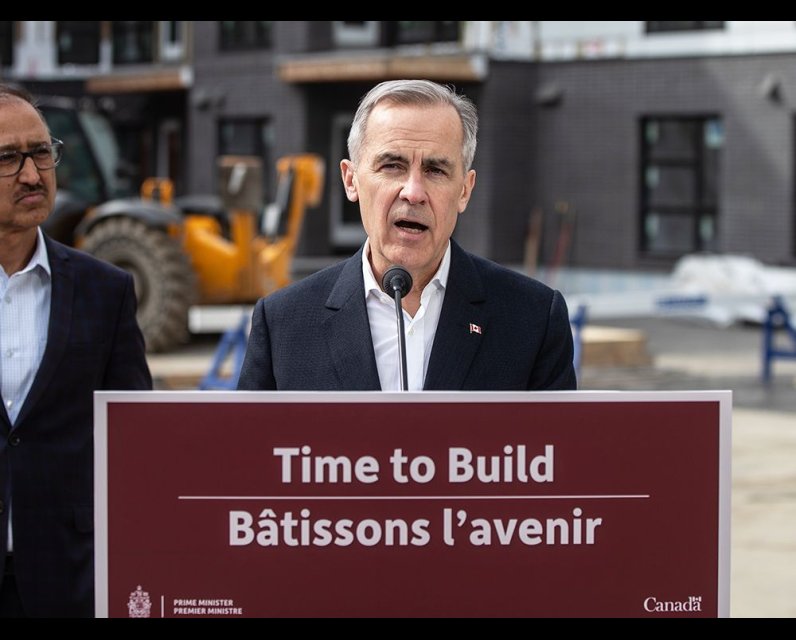Big federal housing plan has a roadblock: the Canadian government itself

Over a 40-year-career, Leo de Bever has had a hand on the tiller inside eight financial institutions — in Canada, the U.S., Japan and Australia.
For nearly a decade, he ran the risk department at Ontario Teachers’ Pension Plan; he was hired to advise the Norwegians on managing their sovereign wealth; and when Alberta Investment Management corporation (AIMCo) was spun off as a Crown corporation in 2008, Leo was the guy recruited by the Alberta government to manage those sovereign wealth and pension assets.
All that experience inside the machine left him with an existential question about the machine: “How do you build innovation — and innovation incentives — into a bureaucracy?”
He’s asking that question again now, because I asked to speak to him about Mark Carney’s promise to launch Canada’s most ambitious housing plan since the Second World War. Build Canada Homes, a yet-to-be-created Crown corp., will get the feds back into the business of building affordable housing, including on public lands, and is set to spend billions to “catalyze” the housing industry and finance “innovative” prefabricated home builders.
De Bever, a PhD economist born in the Netherlands now living in a small community outside Calgary, shares Canadians’ anxiety about housing affordability, especially the intergenerational divide created by historically unprecedented income and wealth inequality.
“Young families (those under 35) were equally represented across income quintiles (statistics) in 1975,” Leo shares in a recent conversation. “Today, they make up two-thirds of the bottom 50 per cent of lower-income households in Canada.”
So Leo’s not questioning the government’s ambitious plan. But he fears the Ottawa machine may not be up to it.
“Who in government has done innovation?” he asks, and gives an example of what he means:
To make housing affordable, you have to bring the costs down by about 50 per cent, Leo posits. “If you give public land, as in Crown-owned land, that property has to be in the right place, or you have to do a swap of some sort,” Leo observes. “Yeah, OK,” he says, “I just think that it will be very hard for traditional bureaucrats to do this.
“They’re just setting up another company (Build Canada Homes) and giving it a mandate,” Leo suggests. “It’s going to take 18 months,” he predicts, “and then they’ll be so-so; they’ll work with large companies because they don’t want a failure on their hands.”
Leo knows governments sometimes have a role — he cites Alberta premier Peter Lougheed’s decision decades ago to step in and co-operate with the private sector to develop oil sands technology. And he knows Canadians need more affordable housing and he’s personally investing — his own time and resources — into community-led projects to achieve that end.
In the northern Alberta town of Athabasca (home of the first post-secondary in Canada to specialize in distance education), Leo is working with the municipal council on a prefab housing project; in a rural B.C. community, he’s helping to advance an affordable recreational community overlooking a lake; in locations outside Calgary, he’s devising new ways to build accessible and health-care supported retirement subdivisions.
“There is a view that stability in home prices can be achieved by replacing urban core detached homes with more densely spaced condominiums or apartment towers,” Leo explains. But he’s not convinced that’s a solution: “The rising average cost of transportation, utilities and other urban infrastructure under already congested conditions could easily offset that effect,” he says.
Instead, Leo’s encouraging investment in housing outside of urban centres, in locations where available land offers a cost advantage and telecommunication infrastructure is reliable. In towns like Athabasca, Alta., Leo suggests “lower-cost modular homes can be brought to an attractive physical environment, as a catalyst for employment, long-distance workers, and economic activity.” What he’s envisioning in Athabasca could be a proof of concept for the Carney government’s Build Canada Homes.
Modern telecommunication technology has diminished the advantage of concentrated urban centres, he adds, “making it easier to adopt a ‘polycentric’ model, where jobs and activities can be moved to satellite communities, where land is less costly.”
With a smile, Leo assures me he isn’t necessarily suggesting companies follow in Elon Musk’s footsteps — relocating Tesla from California to set up a company town in a lower-density, lower-cost land base in Texas.
Finding housing solutions across Canada — community by community — will require fresh thinking. And based on a career spent on the inside of big pension companies and government financial institutions, Leo’s skeptical of bureaucrats’ motivation to innovate. “They stay stuck in a mould,” he asserts, “that’s the problem with big companies and big government.”
How did a guy steeped in decades of big finance become a champion of “small is beautiful”? Leo doesn’t bristle at the question; he even admits to getting caught up in the “bigger is better” culture.
“At AIMCo, I had the same issue, and I only realized afterwards. If you are within that organization and you spend your time on $10 million, $20 million worth of investing, there is a notion that you’re not earning your keep. Because that’s the culture,” he says with a shrug.
“It even was the case when I did something innovative for Teachers,” he continues. “Infrastructure wasn’t a thing when I started doing it, and my colleagues hated it … on the fixed income side, they said, ‘Oh, too much risk,’ and on the private equity side, ‘Not enough money.’”
Notwithstanding, Leo persisted and invested in infrastructure. “Bob Bertram (OTPP’s first chief investment officer) let me do it,” Leo recalls, “and I realized that without the Bob Bertrams of this world, these organizations don’t change.”
National Post
Our website is the place for the latest breaking news, exclusive scoops, longreads and provocative commentary. Please bookmark nationalpost.com and sign up for our newsletters here.



Comments
Be the first to comment